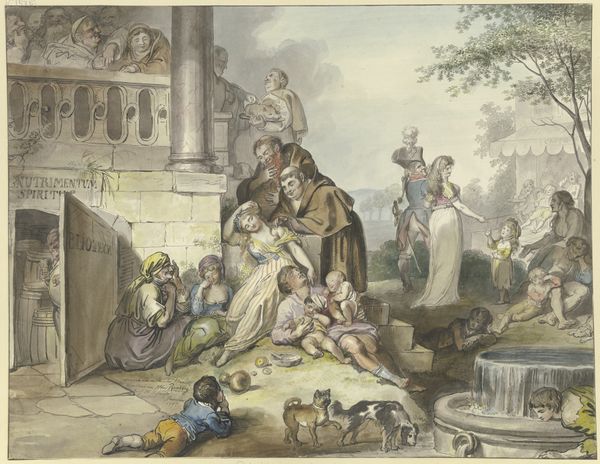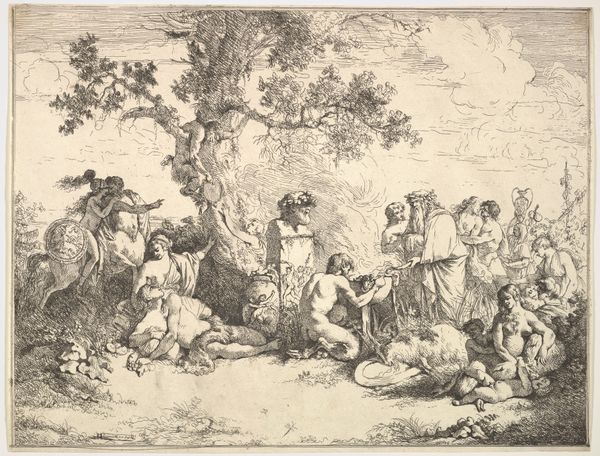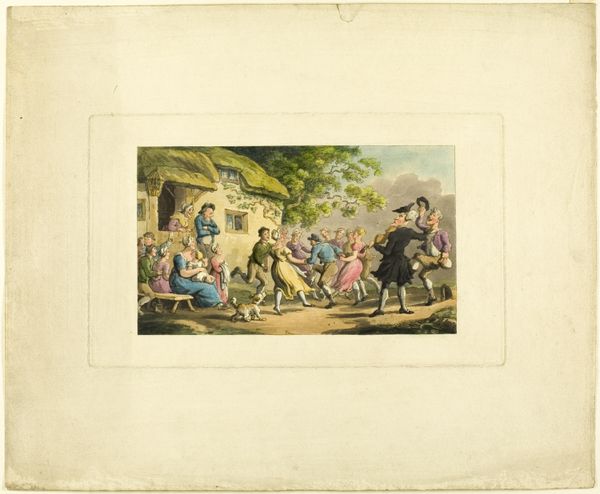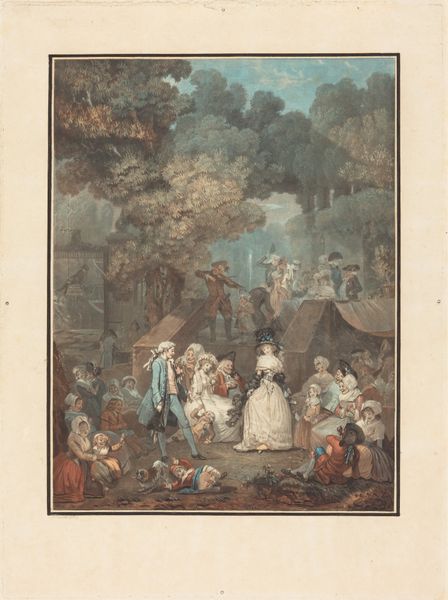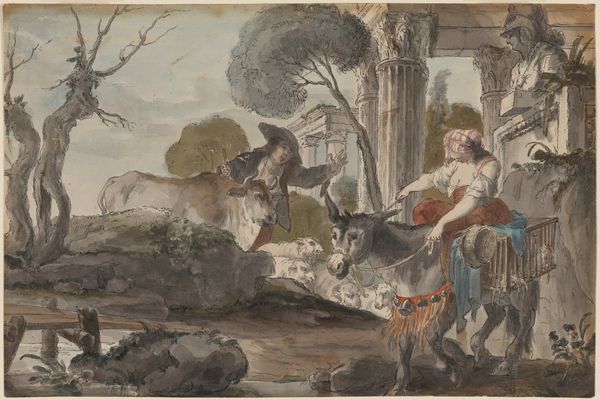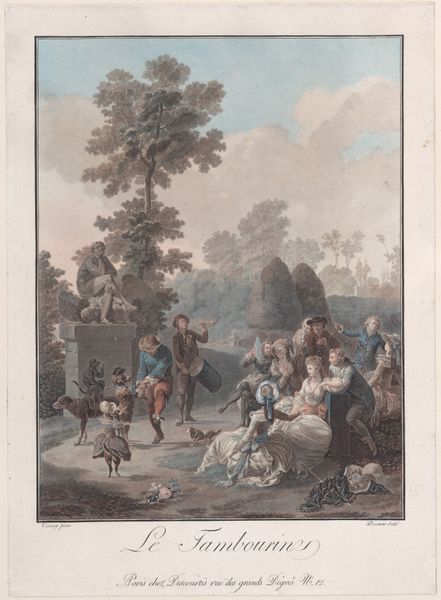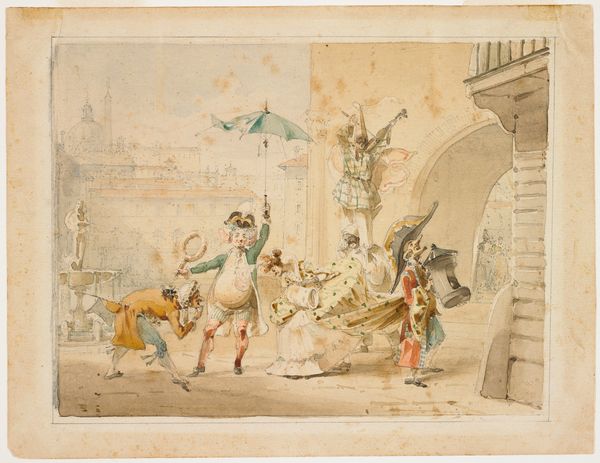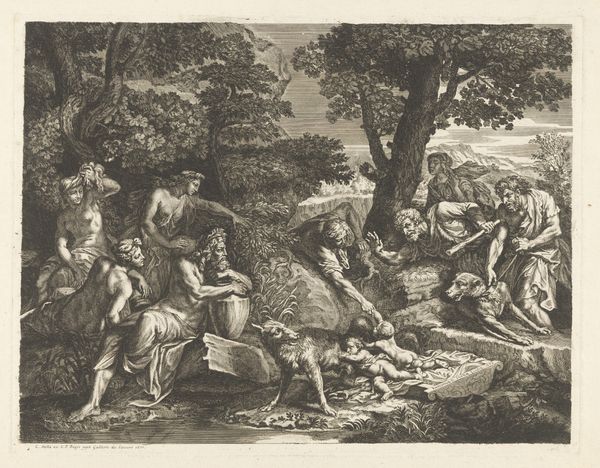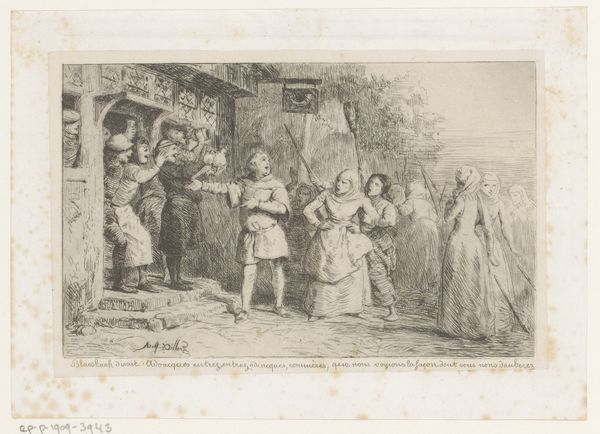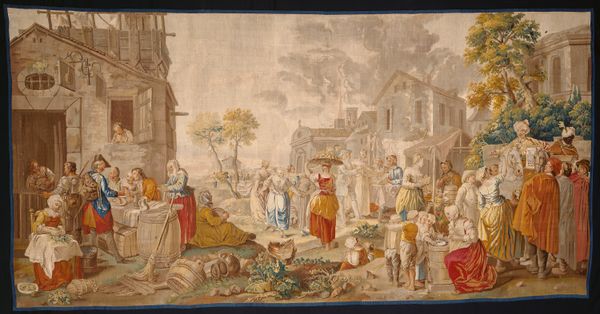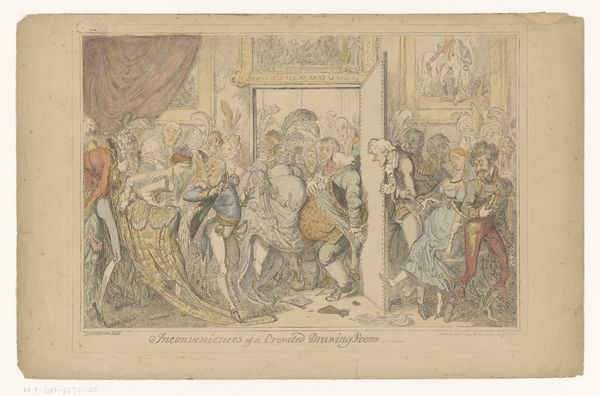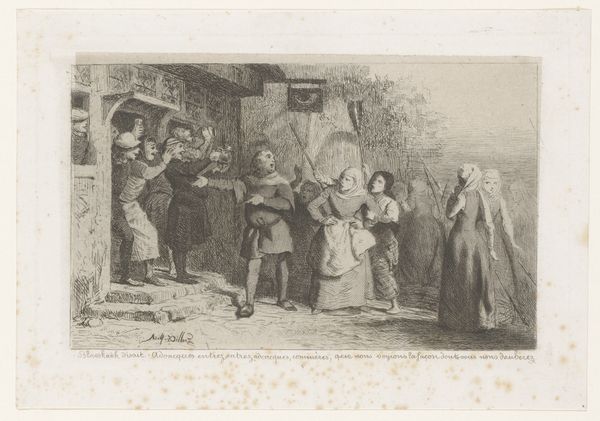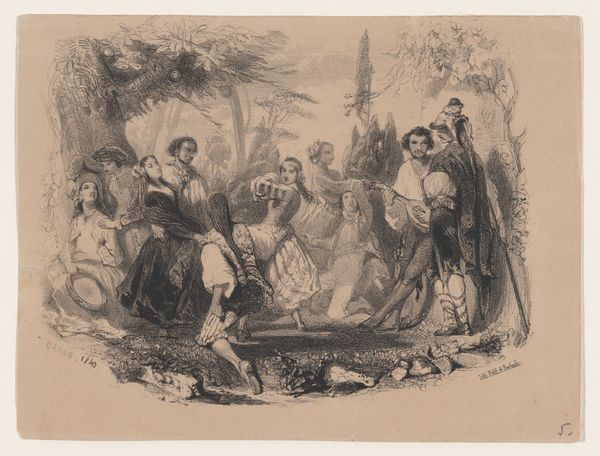
drawing, mixed-media, coloured-pencil, paper, watercolor, ink, graphite
#
drawing
#
mixed-media
#
coloured-pencil
#
landscape
#
figuration
#
paper
#
watercolor
#
ink
#
coloured pencil
#
classicism
#
graphite
#
cityscape
#
genre-painting
#
mixed media
Copyright: Public Domain
Curator: What a scene of lively chaos! It immediately draws you in with the sheer number of figures, their gestures, the implied sounds of merriment. Editor: Indeed. Let's orient our listeners. What we're observing is Johann Heinrich Ramberg's "Popular Amusements in Rome," created around 1797. It’s a mixed-media work on paper, combining graphite, ink, watercolor, and colored pencil, currently housed in the Städel Museum. And I agree—the energy is palpable. Curator: It is, isn't it? The composition feels very deliberate, contrasting public and private spaces. On the left, a more open, urban setting, gradually leading the eye toward the domesticity of the doorway on the right. I'm interested in how the female figures become almost performative in the threshold. Editor: Precisely. Ramberg is known for genre scenes that capture daily life, but I think we must also view it through the lens of his time. Think of the Grand Tour, when wealthy Europeans, primarily British aristocrats, traveled to Italy to immerse themselves in its culture and history. This piece captures a vision of "Italianess", constructed by foreigners at that time. Curator: A constructed performance of identity, absolutely. Note the central figure on the left, selling wine atop his donkey, the carefree women on the swing, a sort of exoticism on display. This representation also suggests social stratification – who is partaking in leisure versus providing it. Editor: And that duality informs its role. Works like these catered to a specific market eager to acquire images that romanticized Italy and to document their experiences in this region. The print market greatly shaped what artists created and what tourists then consumed about Italian identity and life at the time. Curator: The use of mixed media really emphasizes these contrasts. The detailed figures balanced against looser, atmospheric washes. It reflects the multi-layered realities of the setting, both concrete and imagined. Even the classical ruins of Rome depicted on the left contrast with the domestic setting of the figures in the door frame. Editor: Thinking about it from that context, Ramberg has preserved not just a moment but also the complexities of cultural exchange and visual consumption. Curator: A rich image indeed! The festivities appear to be a sort of complicated, colonial performance if we can say so ourselves! Editor: Well, I, for one, appreciate the insight this detailed work offers into both artistic trends and social structures of the late 18th century.
Comments
No comments
Be the first to comment and join the conversation on the ultimate creative platform.
